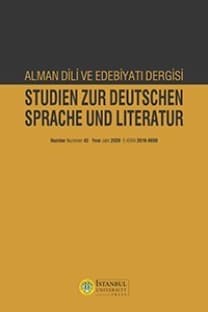Sicilya’nın Neoklasik Grand Tour’u ve Goethe’nin Italienische Reise Eseri
Grand Tour geleneği, on sekizinci yüzyılın Avrupa’sında görülen en önemli ve özel olgudur. Bu dönemde İngiliz, Fransız ve Alman genç aristokratları, eğitim amacıyla İtalya’yı gezmek ve tanımak için yola çıkarlardı. Genel olarak İtalya Seyahati Napoli’de son bulurdu.Zamanla bazı cesur seyyahlar Sicilya’ya ulaşmaya ve klasik uygarlığın kalıntılarını keşfederek bu uzak ve bilinmeyen adada seyahat etmeye çalışmışlardı.On sekizinci yüzyılda Alman sanat tarihçisi Winckelmann’ın yeni estetik fikirleri doğrultusunda Yunan antik kültürü, sanatı ve edebiyatı yeniden Avrupa aydınlarının ilgisini çekmeye başlamıştır.Bu nedenle, eski çağdan beri Magna Grecia (Büyük Yunanistan) olarak adlandırılan ve İtalya’daki Yunan kültürünün beşiği olarak bilinen Sicilya’ya doğru yapılan seyahatlerde ciddi bir artış yaşanmıştır. Bu dönemde İtalya seyahatleri sırasında Sicilya’ya kadar giden seyyahları arasında Goethe de bulunmuştur. Bu makalenin esas amacı, Alman yazarı ve şair Goethe’nin İtalienische Reise eserinde rastlanan Sicilya imgesini incelemektir.
The Neoclassical Grand Tour of Sicily and Goethe’s Italienische Reise
The Grand Tour tradition is a very important phenomenon of the eighteenth-century Europe. During this period, English, French and German aristocrats traveled in Italy for educational purposes. At the same time, in the eighteenth century, Greek ancient culture, art and literature attracted the attention of European intellectuals under the influence of the new aesthetic ideas of the German art historian Winckelmann. For this reason – although the eighteen-century Italian journey generally ended in Naples – some courageous travelers went to Sicily and traveled in this remote and unknown island to discover the remaining ruins of classical Greek civilization. In this period there was a serious increase in travel to Sicily, the center of Greek culture in Italy in ancient times. One of the most important foreign writers who traveled to Sicily and described their travel experience is certainly the German poet and writer Johann W. Goethe. The purpose of this article is to analyse the image of Sicily present in the Italienische Reise by Goethe.
Keywords:
Goethe, Italienische Reise, Italian journey, Neoclassicism Antiquity,
___
Bairati, Eleonora, Finocchi, Anna (1984): Arte in Italia, vol. 3, Loescher, Torino. Blanton, Casey (2002): Travel Writing. The Self and the World, Routledge, New York-London. Birus, Hendrik (2001): Goethes Italienische reise als Einspruch gegen die Romantik, Europäische Begegnungen – Die Faszination des Südens. Acta Ising 2000, Hg. v. Stefan Krimm, Ursula Triller, München, Bayerischer Schulbuchverlag, S.116-134, <http://www.goethezeitportal.de/db/wiss/goethe/italreise_birus.pdf> Brilli, Attilio (1995): Quando viaggiare era un’arte. Il romanzo del Grand Tour, Il Mulino. Bologna. Buzard, James (2002): “The Grand Tour and after (1660-1840)”, in: The Cambridge Companion to Travel Writing, Hulme, Peter & Youngs, Tim (Ed.), Cambridge University Press, Cambridge, pp: 37-52. Castellani, Emilio (2011): “Commento e note”, in Johann W. Goethe, Viaggio in Italia, trad. E. Castellani, Mondadori, Milano, pp. 625-775. Chiusano, Italo Alighiero (1988): “Goethe in Italia: un bilancio”, in: Goethe in Italia, catalo della mostra, Roma, Museo del folklore, 20 maggio-3 luglio 1988, pp. 13-22. Clerici, Luca (2008): “Introduzione”, in Scrittori italiani di viaggio, 1700-1861, Vol. I, Mondadori, Milano, pp. IX-CXLII. De Seta, Cesare (1992): L’Italia del Grand Tour. Da Montaigne a Goethe, Electa, Napoli. Fertonani, Roberto (2011): “Goethe, l’Italia e gli italiani”, in Johann W. Goethe, Viaggio in Italia, trad. E. Castellani, Mondadori, Milano, pp. XI-XXXIV. Goethe, Johann W. (1816/1817/1829): Italienische Reise, Projekt Gutenberg-DE, online version, <http://gutenberg.spiegel.de/buch/italienische-reise-3682/1> Goethe, Johann W. (1970): Italian Journey (1786-1788), tras. WH. Auden and E. Mayer, Penguin Books, London. Kanceff, Emanuele (2006): “Dimesioni a confronto: viaggio e letteratura”, in Viaggio e letteratura, a cura di Maria Teresa Chialant, Marilio, Venezia. Karail, Deniz Dilşad (2015): “Corto Martese: la figura dell’antieroe nel fumetto italiano contemporaneo”, in La lingua e la letteratura italiana in prospettiva sincronica e diacronica, Atti del VI Convegno internazionale di italianistica dell’Università di Craiova, 19-20 settembre 2014, a cura di Elena Pîrvu, Franco Cesati Editore, Firenze, pp. 599-606. Macchia, Giovanni (1978): Il principe di Palagonia. Mostri, sogni, prodigi nelle metamorfosi di un personaggio, Mondadori, Milano. Maczak, Antoni (1992): Viaggi e viaggiatori nell’Europa moderna, trad. R. Panzone, A. Litwornia, Laterza, Roma-Bari. Michéa, René (1945): Le “Voyage en Italie” de Goethe, Aubier, Paris. Parodi,Bent, Corradini, Anna Maria (2008): Goethe in Sicilia. L’isola iniziatica, Armando Siciliano Editore, Messina. Ricorda, Ricciarda (2012): La letteratura di viaggio in Italia. Dal Settecento a oggi, Editrice La Scuola, Brescia. Sommariva, Giulia (1973): “Viaggiatori stranieri in Sicilia nei secoli XVIII e XIX”, Estudios Turisticos, n. 39, pp: 41-72. Spampinato, Denise M. (2012): “Goethe in Naples: A Morphology of the Ordered Chaos”, California Italian Studies, 3(1), <http://escholarship. org/uc/item/35r0d620> Tuzet, Hélène (1988): Viaggiatori stranieri in Sicilia nel XVIII secolo, trad. A. Bellomo, Sellerio, Palermo. Valdez Damian (2014): German Philhellinism. The Pathos of the Historical Imagination form Winckelmann to Goethe, Palgrave Macmillan, New York.- Başlangıç: 1954
- Yayıncı: İstanbul Üniversitesi
